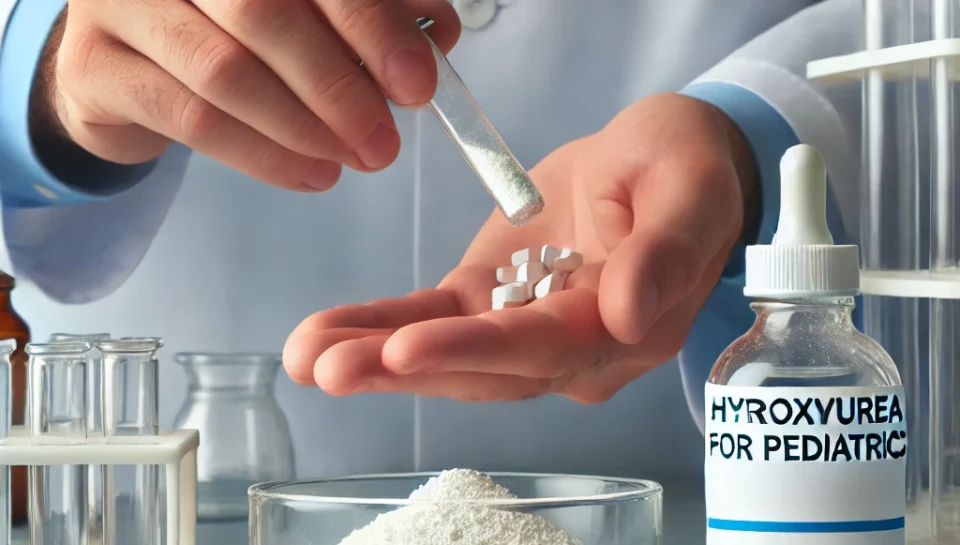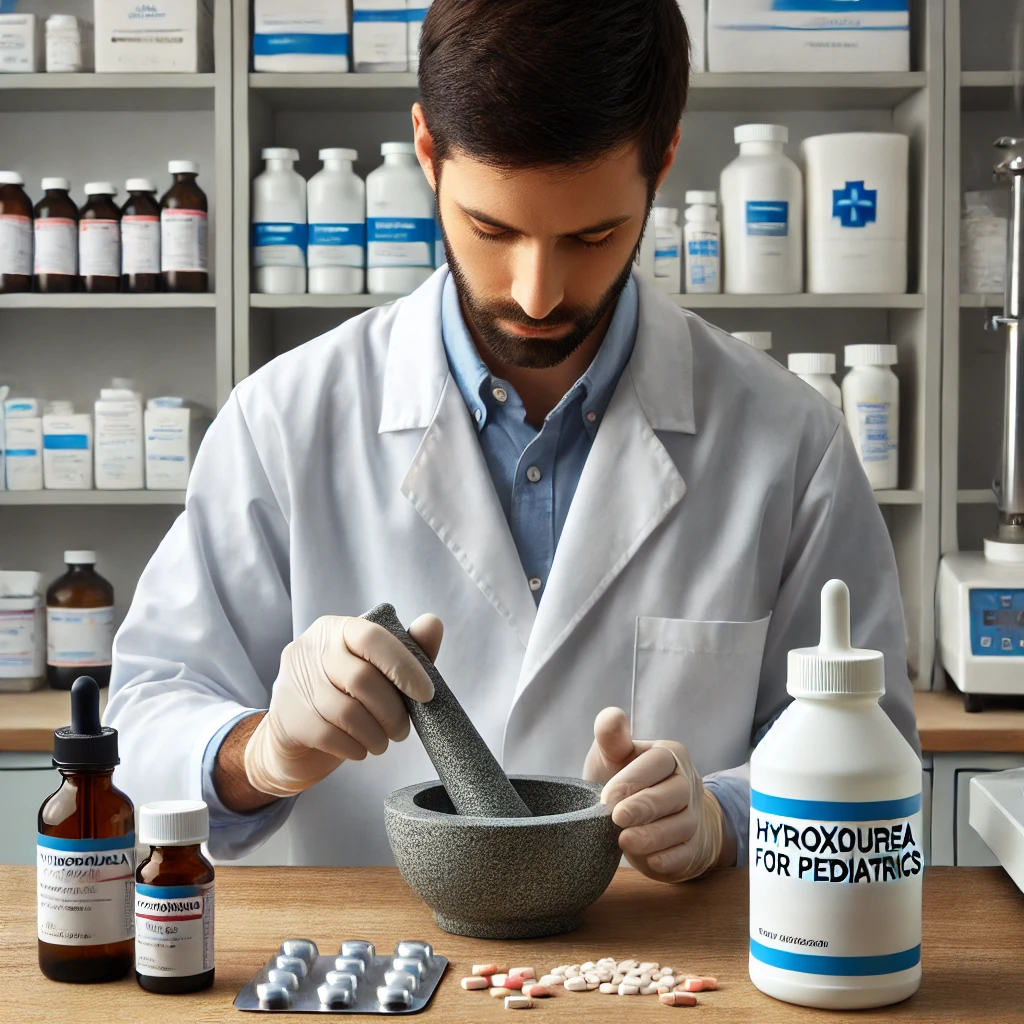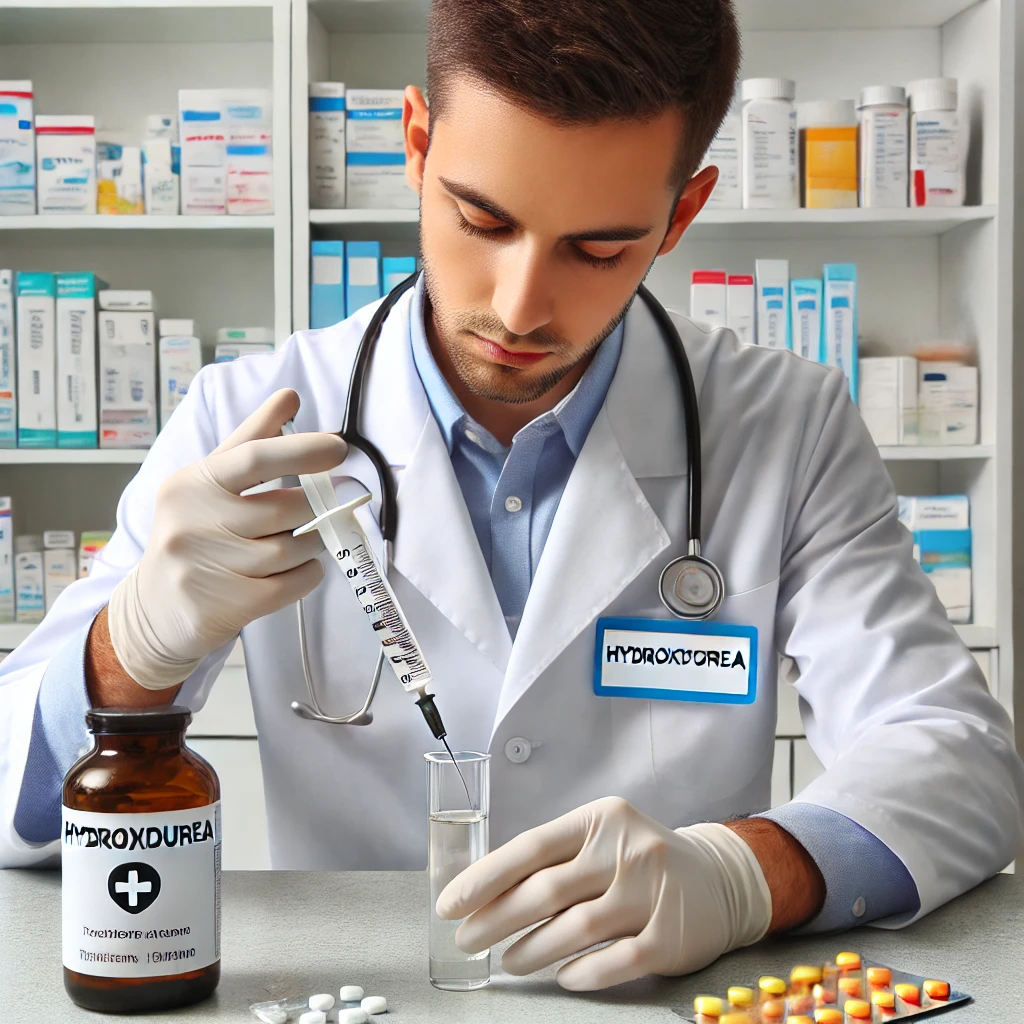
Quality Standards for Compounded Hydroxyurea Syrup in Pediatric Care. Complete 2025 Guide.
Introduction to compounded hydroxyurea syrup
Hydroxyurea is used in the management of sickle cell disease, an autosomal recessive disorder that’s common in the western part of Kenya. Quality standards for compounded hydroxyurea. This medicine is mainly available in form of tablets and capsules, and hence the need for a pharmacist to prepare syrups for pediatric patients. Furthermore, these compounded syrups have to comply to the set regulatory standards on quality, thus ensuring patient safety.
Understanding Hydroxyurea Syrup Compounding in Pediatric Care
Sickle cell disease affects thousands of children in Kenya, making proper medication management essential. The conversion of hydroxyurea from solid dosage forms to liquid preparations requires expertise and precision. Pharmacists must consider various factors, including taste, stability, and accurate concentration, to ensure optimal therapeutic outcomes for young patients. Quality standards for compounded hydroxyurea
Key quality parameters for hydroxyurea syrup
- Identification – the 500mg capsules are usually emptied and later used in extemporaneously preparing the solutions. These capsules have to comply with the pharmacopoeial standards on identity, i.e., confirming that hydroxyurea is present in the capsule contents as the API.
- Assay – the label claim on the syrups usually indicate a concentration of 100mg/mL. Carrying out the assay of content using HPLC with UV detection helps confirm that the syrup concentration is as per what the label claims. This precise analytical method ensures that each batch meets the specified strength requirements, crucial for accurate dosing in pediatric patients.
- Stability – hydroxyurea is a light sensitive molecule, and the syrups should be stored in amber-colored bottles. A number of studies carried out on these syrups, that is outside Kenya, claim that the solutions are stable for up to 120 days. Use of amber-colored glass bottles Temperature-controlled storage environments Protection from direct sunlight and excessive heat Proper sealing to prevent contamination. Stability studies include the following factors:
- Physical stability: this test serves to affirm that the color and pH of the syrups do not change overtime.
- Chemical stability: just as the assay, HPLC with UV detection is used to confirm the content of hydroxyurea in the syrups overtime. Ideally, the content should not vary with time to ascertain that the syrups can serve the patient for a month.
- Quality standards for compounded hydroxyurea
Pharmacist’s Role in Hydroxyurea Syrup Quality Standards

Dosing of hydroxyurea for sickle cell management is based on the weight of the patient, i.e., individualized dosing. Therefore, when it comes to the content of syrups, it has to comply with the label claim to facilitate accurate dosing. Pharmacists are the drug experts, and their role in meticulous preparation of these syrups is fundamental when it comes to administration of accurate doses.
It is the pharmacists themselves too who are well versed with the different stability tests for compounded syrups. They have a key role in ensuring that these syrups comply with the regulatory standards on quality, by performing the tests on chemical and physical stability. Quality standards for compounded hydroxyurea
Modern pharmacists serve as medication safety specialists in compounding practices. They develop and implement standard operating procedures, train pharmacy technicians in proper techniques, and maintain certification in sterile and non-sterile compounding. Regular competency assessments ensure all staff members maintain their skills, while continuous monitoring of environmental conditions and equipment calibration ensures consistent quality standards. Quality standards for compounded hydroxyurea
Hydroxyurea Dosing for Pediatric Sickle Cell Disease
Weight-based dosing requires careful calculation and regular adjustment as children grow. Pharmacists work closely with healthcare providers to ensure proper dose escalation protocols are followed. They develop patient-specific dosing charts and provide caregivers with clear instructions for administration. Regular monitoring of blood counts helps determine optimal dosing strategies, while documentation of patient response guides future dose adjustments. Quality standards for compounded hydroxyurea
Pediatric Drug Formulation Considerations

Creating child-friendly formulations involves more than just converting adult medications to liquid form. Considerations include:
- Selection of appropriate sweeteners and flavoring agents
- Use of dye-free ingredients to minimize allergic reactions
- Incorporation of suitable preservatives for extended stability
- Development of easy-to-use measuring devices for accurate dosing
- Implementation of child-resistant packaging while maintaining accessibility for caregivers
Conclusion
The quality of compounded hydroxyurea syrups is important in ensuring patient safety and optimal management of sickle cell disease. Pharmacists have a major role to play in ensuring medication safety. The preparation and quality control of compounded hydroxyurea syrups represent critical aspects of pediatric sickle cell disease management. Pharmacists serve as essential guardians of medication safety and quality, ensuring that these vital preparations meet all necessary standards for patient care. Through continued research, implementation of rigorous quality control measures, and dedication to professional excellence, pharmacists contribute significantly to optimal therapeutic outcomes for pediatric patients requiring hydroxyurea therapy. Quality standards for compounded hydroxyurea
Researcher information
Anne Valent Nyaoro is a pharmacist conducting a research on quality of compounded hydroxyurea. Her research has contributed greatly on our understanding of the quality standards of compounded hydroxyurea. This blog post was published by her consent. More information is provided on her linkedin account.
Pediatric sickle cell medication Quality standards for compounded hydroxyurea
Pharmaceutical compounding standards Medication stability testing. Pharmacy quality control. Pediatric drug formulation.
How to compound hydroxyurea syrup for children. Stability testing methods for compounded medications. Quality control standards for pediatric liquid medications. Pharmacist role in medication compounding safety Hydroxyurea dosing for pediatric sickle cell disease. Quality standards for compounded hydroxyurea






